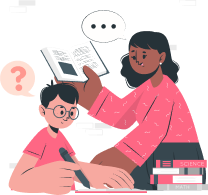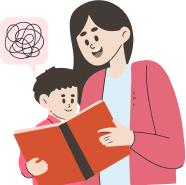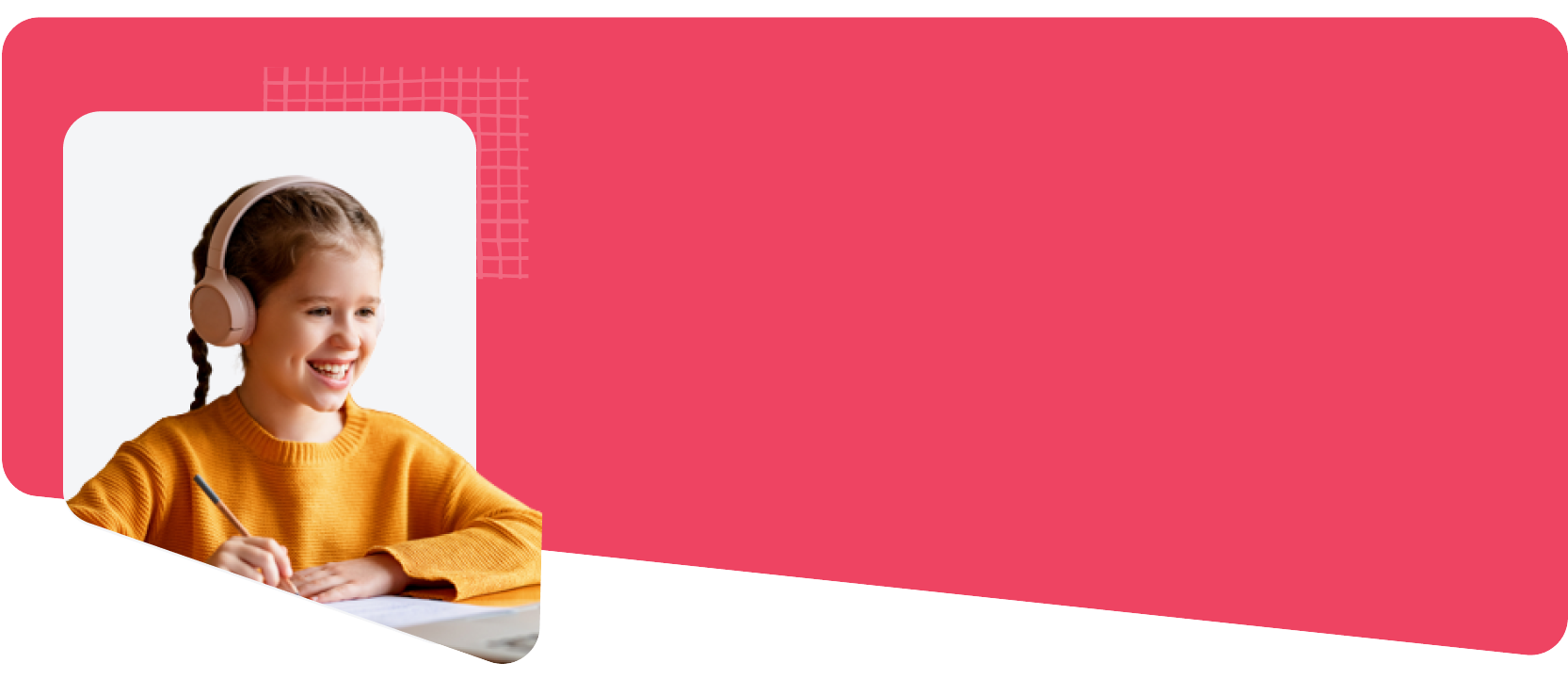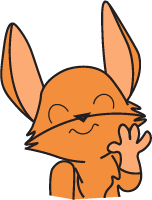Handwriting can feel overwhelming for many kindergarten children, especially when every letter demands patience and practice. As a parent, watching your child struggle can be just as challenging. Rainbow writing offers a colorful and engaging way to turn handwriting practice into something enjoyable.
By tracing letters with different colors, children build fine motor skills, strengthen letter recognition, and gain confidence in their writing abilities. If you’ve been wondering what rainbow writing is in kindergarten, this blog explains it vividly by going through its benefits and how to practice it with your child at home.
Key Takeaways
-
Rainbow writing transforms routine handwriting drills into playful, creative learning experiences.
-
The use of multiple colors keeps children engaged while reinforcing correct letter patterns.
-
Repetition with variety strengthens both memory and muscle control for smoother writing.
-
Simple home setups make it easy for parents to support consistent practice.
-
Confidence grows naturally as children see their progress in colorful results.
What is Rainbow Writing in Kindergarten?

Rainbow writing is a handwriting practice method where children trace letters using different colored pencils or crayons. This technique transforms traditional writing practice into a visually engaging activity. It captures the attention and motivation of young learners in remarkable ways.
Teachers commonly use rainbow writing in kindergarten classrooms because it addresses multiple learning needs. The colorful approach helps children focus on letter formation. At the same time, it develops fine motor skills that support all writing activities. Children typically start by tracing over pre-written letters or words. This gradually builds the muscle memory needed for independent writing.
The method works particularly well for kindergarten students because it combines learning with play. Young children are naturally drawn to bright colors and creative activities. Rainbow writing satisfies this preference while delivering profound educational benefits. It supports their writing development in ways they actually enjoy.
Understanding what rainbow writing is sets the foundation, but how does it actually work in practice?
How Does Rainbow Writing Work for Kids?

Rainbow writing follows a simple step-by-step process that children can easily understand and follow. Your child begins with a pre-written word or letter. Then they trace over it multiple times using different colored writing tools.
The repetitive nature of this activity keeps children engaged through the colorful, creative process. Here's how it works:
-
Start with prepared materials - Give your child worksheets with dotted or solid letters that match their skill level.
-
Choose the first color - Let them select their favorite colored pencil or crayon to begin.
-
Trace slowly and carefully - Guide them to make deliberate movements that follow correct letter shapes.
-
Switch to the second color - After one complete tracing, pick a different color for the next round.
-
Continue with multiple colors - Repeat this process with 3-5 different colors to create the rainbow effect.
-
Focus on proper formation - Each tracing session reinforces correct letter shapes and direction.
-
Celebrate the colorful result - The beautiful rainbow letters give immediate positive feedback.
Each tracing session strengthens your child's ability to write letters correctly. The different colors make repetitive practice feel fresh and exciting. This approach turns what could be tedious drill work into an art project your child looks forward to.
Also Read: 50 Creative Writing Exercises to Inspire Younger Writers
Now that you know how it works, you might be wondering what specific benefits this colorful approach offers. Let’s get on with answering this question next.
What are the Benefits of Rainbow Writing?
Rainbow writing offers numerous advantages that support your child's writing development in meaningful ways. This multi-sensory approach addresses several key areas of learning at once. It makes practice time more valuable than traditional methods.
Strengthens Fine Motor Skills
Rainbow writing relies on small, precise hand and finger movements that develop fine motor coordination. Studies in early childhood development have shown strong links between fine motor development and handwriting legibility.
As children trace letters in different colors, they strengthen grip, improve pencil control, and build stability. These skills form the foundation for accurate and legible writing across daily tasks.
Improves Letter Recognition and Formation
The combination of visual repetition and tactile feedback makes letter shapes easier to remember. Tracing each letter multiple times in different colors reinforces correct formation patterns and strengthens memory. Children who struggle with letter reversals benefit especially, as repeated directional practice reduces mistakes like confusing b and d.
Increases Writing Motivation and Engagement
The playful, colorful nature of rainbow writing transforms handwriting practice into an activity that feels creative rather than repetitive. Unlike plain worksheets, it resembles an art project, keeping children engaged for longer.
As a result, they often request more practice on their own, turning writing into an activity they genuinely enjoy.
Supports Multi-Sensory Learning
Rainbow writing engages multiple senses simultaneously, making it highly effective for individuals with diverse learning styles. Visual learners absorb patterns through color, while kinesthetic learners benefit from repeated hand motions.
This multi-sensory input strengthens retention far more than single-sense methods, helping children internalize writing skills with greater ease.
Builds Writing Confidence
The vibrant results provide immediate positive reinforcement, giving children a sense of achievement after each attempt. Visible progress boosts self-belief, encouraging them to approach more challenging writing tasks without hesitation. With each success, confidence grows, and practice becomes something they look forward to rather than avoid.
To put these benefits into practice, begin by setting out the materials your child will use for rainbow writing.
What Materials Do You Need for Rainbow Writing?

To start with rainbow writing, you need to have minimal, affordable materials that most families already have at home. You can even create practical rainbow writing activities with basic school supplies. A little creativity goes a long way.
The key is choosing age-appropriate tools that small hands can control easily. Here are the materials you'll need:
-
Colored pencils, crayons, or washable markers - Choose tools with a good grip that small hands can control.
-
Paper with letters or worksheets - Use dotted letters, solid letters, or create your own templates.
-
Stable writing surface - Provide a clipboard, table, or writing board for better control and posture.
-
Thick writing tools for beginners - Triangular pencils or chunky crayons work better than thin ones.
-
Sheet protectors (optional) - Allow repeated use of worksheets with washable markers.
-
Different paper textures - Textured paper can provide extra sensory input for learning.
-
Reward stickers - Small incentives can motivate children to complete their practice sessions.
-
Good lighting - Make sure your child can see their work clearly to trace accurately.
Keep materials organized in a special writing basket or container. This preparation reduces setup time and helps children feel ready to begin. When everything is accessible, your child can focus on the actual writing practice.
Also Read: How to Help Your Child Struggling with Writing Skills
Once you have the right materials, it’s time to put them into action through fun, structured rainbow writing activities.
List of 7 Fun Rainbow Writing Activities for Kindergarten

Creative rainbow writing activities keep children engaged while building essential writing skills. These varied approaches prevent boredom and address different aspects of literacy development. Each activity targets specific learning goals while maintaining the colorful, engaging nature that makes rainbow writing so effective.
Here are unique activities you can try with your child:
1. Name Writing Practice
The very first thing a child should learn to write is their own name. It is the foundation of their writing journey, which is why this activity sits at the top of the list. Children feel naturally motivated to write their names because it represents their identity.
Practicing their name not only sparks pride but also builds a personal connection to writing that makes every other step easier.
What to Do
-
Write your child's name in large, clear letters on paper.
-
Start with just their first name using dotted or solid letter guides.
-
Have them trace each letter slowly with their first chosen color.
-
Switch colors for each complete name tracing.
-
Gradually add their last name as skills improve.
-
Display their colorful name creations proudly.
2. Sight Word Rainbow Tracing
This activity combines handwriting practice with reading skills by focusing on high-frequency words. Children learn to recognize and write words they'll encounter often in books. School assignments become easier when they know these words automatically.
What to Do
-
Choose 3-5 kindergarten sight words like 'the', 'and', 'is', 'see'
-
Write each word clearly with space for tracing.
-
Have your child trace one word multiple times with different colors.
-
Practice the same words throughout the week.
-
Say the word aloud while tracing to build reading connections.
-
Create sentences using the sight words they have practiced.
3. Alphabet Letter Focus
Alphabet letter focus is one such activity that supports a systematic approach, helping children master both uppercase and lowercase letter formation. It builds strong foundational skills by concentrating on specific letters. Adding related vocabulary makes the learning even more meaningful.
What to Do
-
Select 1-2 alphabet letters for each session.
-
Include both uppercase and lowercase versions.
-
Add 2-3 words that start with those letters.
-
Have your child trace the letters first, then the words.
-
Practice letter sounds while tracing.
-
Create a letter book with their rainbow letter pages.
4. Shape and Number Practice
This activity extends rainbow writing beyond letters to build mathematical skills. Children develop the foundational strokes needed for both subjects. Pre-writing skills get stronger through shape tracing.
What to Do
-
Draw basic shapes like circles, squares, triangles, and diamonds.
-
Include numbers 1-10 with proper formation guides.
-
Start with shapes, then move to numbers.
-
Trace each shape or number with 3-4 different colors.
-
Count while tracing numbers to reinforce math concepts.
-
Create patterns using their rainbow shapes.
5. Story Word Collection
Story word collection is a literature-connected activity that makes writing practice meaningful by using words from favorite books. Children connect their handwriting development to stories they love. Vocabulary learning happens naturally through this approach.
What to Do
-
Read a favorite book together first.
-
Identify 5-7 interesting words from the story.
-
Choose action words, character names, or descriptive words.
-
Write these words clearly for tracing practice.
-
Have your child trace each story word with rainbow colors.
-
Retell parts of the story using their practiced words.
6. Five Favorites List
This activity adds a personal touch to handwriting practice. Children write rainbow words from their favorite categories, making the task both meaningful and enjoyable.
What to Do
-
Ask your child to choose five favorites, such as foods, animals, or toys.
-
Write each word down clearly, leaving enough space for tracing.
-
Have your child trace each word with multiple colors.
-
Discuss their list to explore the connection between writing and conversation.
-
Create a colorful chart of their five favorites to display.
7. Dice Challenge
The dice challenge activity proposes a playful game that adds excitement to tracing practice. Rolling a die determines how many times each letter or word receives a rainbow, making learning feel like a fun challenge.
What to Do
-
Write a few letters or short words on a sheet.
-
Give your child a dice and colored pencils or crayons.
-
Ask them to roll the dice for the first letter or word.
-
Have them trace it as many times as the number rolled, each time with a new color.
-
Repeat for each letter or word on the sheet.
-
Celebrate the colorful results together.
These activities provide variety while building essential skills, but you'll want to know how to implement them successfully at home.
Also Read: Best Creative Writing Tools for Kids in 2025
How Can You Try Rainbow Writing at Home?

Implementing rainbow writing at home creates valuable learning opportunities that complement your child's school instruction. Simple preparation and consistent practice can make this technique highly effective for your family. Success depends on creating the right environment and following structured steps.
Here's how to get started with confidence:
-
Setting Up Your Writing Space
A dedicated spot for rainbow writing helps children focus and enjoy the activity. Choose a quiet area with good lighting, comfortable seating, and a stable surface. Keep supplies organized and within easy reach so practice feels smooth and inviting.
-
Choosing the Right Time
The right timing makes a big difference. Pick moments when your child feels alert, such as after a snack. Begin with short 10–15 minute sessions and gradually extend them as attention improves. Stay flexible and adjust based on your child’s mood.
-
Creating Positive Learning Experiences
Children thrive when practice feels encouraging, not stressful. Praise effort, display their colorful work, and use kind words to build confidence. Treat rainbow writing as a fun bonding moment, rather than focusing on perfect results.
-
Organizing Materials and Supplies
Well-prepared materials reduce distractions and keep children motivated. Store colored pencils, worksheets, and paper in one container. Have backups ready and make the setup quick so energy can stay focused on learning.
Even with the best intentions, parents often make mistakes that can hinder their child's progress.
What Mistakes Should You Avoid in Rainbow Writing?
Common mistakes can reduce the effectiveness of rainbow writing or frustrate young learners. Awareness of these pitfalls helps you create more successful learning experiences. Every parent wants to help their child succeed, but sometimes good intentions can backfire.
Here is the list of some common mistakes that you can make and tips on how to avoid them.
Choosing Inappropriate Letter Difficulty
Avoid starting with complex letters or long words that overwhelm your child. Begin with simple letters like 'c', 'o', and 's' before progressing to challenging ones. These easier letters build confidence and success from the start.
-
How to solve it: Select words and letters that match your child's current skill level. If they struggle with individual letters, don't jump to whole words. Building skills gradually helps prevent frustration and maintain motivation.
Using Too Many Colors at Once
Limit color choices to 3-5 options per session to prevent decision fatigue. Too many choices can overwhelm young children and distract them from the writing practice itself. Simple choices help children focus on the actual tracing.
-
How to Solve it: Organize colors in the order your child should use them. You can also let them choose their favorites before beginning the activity. This gives them control while keeping the process manageable.
Rushing Through the Process
Avoid pushing for speed over accuracy in rainbow writing practice. The goal is to form letters carefully and deliberately, rather than completing them quickly. Quality movements build better muscle memory than hurried attempts.
-
How to Solve it: Encourage your child to take their time with each tracing. Slow, controlled movements create lasting learning. Remember that this is a skill-building exercise, not a race to finish.
Focusing Only on Perfection
Don't expect perfect letters from the beginning. Kindergarten children are still developing fine motor skills and hand strength. Their abilities grow gradually with consistent practice and encouragement.
-
How to Solve it: Celebrate improvement and effort rather than demanding flawless results. Progress happens over time, not in a single session. Your child needs to feel successful to stay motivated.
Skipping Proper Grip and Posture
Pay attention to how your child holds their writing tool and positions their body. Poor grip or posture habits formed early can be hard to correct later. These fundamentals affect all future writing success.
-
How to Solve it: Guide them toward a proper pencil grip and a comfortable sitting position. Good writing mechanics support better letter formation and prevent fatigue during practice sessions.
While rainbow writing provides an excellent foundation for your child's writing skills, you might want additional structured support for their development.
How Does FunFox Help Children Build Strong Writing Skills?

FunFox Writers Club transforms writing instruction into an engaging, supportive experience that builds strong foundational skills. Our program serves children in grades 1-7 who need more than basic handwriting practice. We create confident, creative writers who love expressing themselves on paper.
Our approach recognizes that every child learns differently and progresses at their own pace. Small class sizes with a maximum of six students allow our specially trained teachers to provide personalized attention.
Key Features That Support Writing Development:
-
Live Interactive Classes: Weekly 60-minute Zoom sessions provide real-time learning experiences, allowing children to receive immediate feedback.
-
Process-Based Feedback: Regular, constructive feedback helps children understand their progress and areas for improvement.
-
Recorded Sessions: Children can review lessons they missed or revisit challenging concepts at their own pace.
-
Digital Learning Portal: Access to interactive worksheets, games, and resources extends learning beyond classroom time.
-
Community Events: Virtual and in-person activities build connections and celebrate writing achievements.
Our program supports spelling strategies, grammar, and punctuation while guiding children through characters, plots, and different genres. Teachers build confidence with encouragement, layering skills and concepts at each stage.
Wrapping Up
Rainbow writing turns handwriting practice into an enjoyable activity that helps children build confidence and a strong writing foundation. If you’ve wondered what rainbow writing is in kindergarten, it is simply a colorful way of tracing letters that makes learning fun and effective. By blending skill-building with creativity, rainbow writing gives your child both progress and pride in their writing journey.
FunFox builds on this approach with a structured writing program that guides children step by step and makes writing practice engaging at home.
Want your child to enjoy writing instead of resisting it? The FunFox Writers Club gives them structure, confidence, and joy in every session. Reserve a free trial class today and see the difference.
FAQ’s
1. What is the rainbow writing strategy?
Rainbow writing strategy uses different colors to trace or rewrite words, helping children build muscle memory, strengthen recognition, and practice handwriting in a more engaging, visual way.
2. What is the rainbow writing method?
The rainbow writing method involves writing or tracing letters repeatedly with multiple colors. This repetition with variety improves retention, writing fluency, and makes learning feel less monotonous for young children.
3. How does rainbow writing benefit students with dyslexia?
Rainbow writing supports students with dyslexia by combining visual and kinesthetic learning. Multiple color cues help distinguish letters, reduce reversals, and create stronger memory connections during repeated handwriting practice.
4. Is rainbow writing effective?
Yes, rainbow writing is effective because it combines repetition, color association, and fine motor practice. This combination strengthens handwriting, improves word retention, and makes writing practice enjoyable for children.
5. What is an example of a rainbow in creative writing?
In creative writing, rainbow writing might involve assigning a different color to each character’s dialogue or theme, helping children organize ideas visually and make their stories more engaging.















